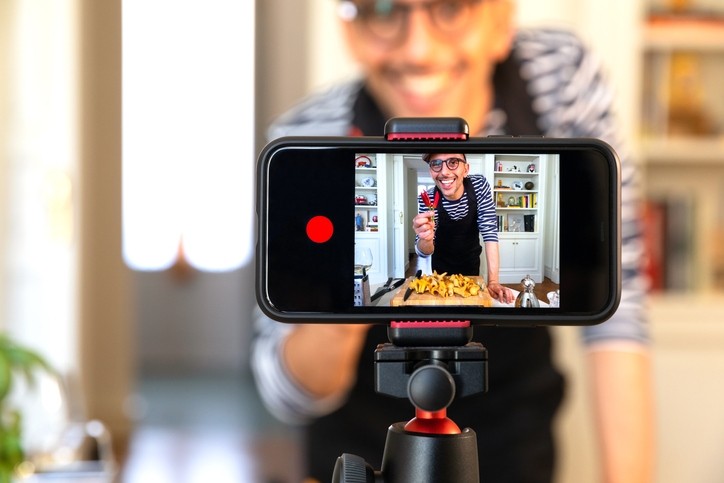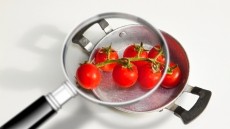How the ‘gritty honesty’ of TikTok may help transform food and beverage

TikTok is one of the world’s largest social media platforms, with over one billion active users worldwide.
Thanks to the unpolished nature of the video content, an algorithm designed to leave users ‘stumbling upon’ diverse content, and the participatory nature of the platform, it is fundamentally changing some consumer behaviour and shaking up the world of food and drink.
So much so that Instagram’s static and ultra-stylized food flat-lays are looking old hat, said Lily Echanis, Cultural Analyst At Verve Market Research Agency.
“We’re moving away from self-conscious, curated and aesthetically-focussed foods, which have been pushed by influencers and celebrities, and moving towards a world in which people aren’t afraid to ‘give it a go’,” she told FoodNavigator. “We’re cooking imperfectly and prioritising pleasure over perfection.”
Navigating the food and drink scene on TikTok
Analysis from the market research agency (its report is called The Future of Food & Drink: How TikTok is influencing the way we eat) reveals that there are several food and drink cultural shifts that are playing out on the platform. These represent an exciting opportunity for manufacturers, brands, retailers to tap into; both on the platform and in real life.
Take the label #AlmondMoms. This pokes fun at those parents who might push restrictive and faddish eating habits onto their children, often under the guise of health and wellness. Many regard the term simply as a joke aimed at superficiality, with celebrities like Gwyneth Paltrow typically the butt. Others have criticised the term for potentially trivialising eating disorders. But Echanis believes #AlmondMoms is example of how TikTok is being utilised to help people collectively work on our experiences with food in a fun and social way.
“Food is loaded with emotional weight,” she explained. “We rely on it for pleasure, connection, traditions and more. Despite the wonderful joys food can bring us, harmful diet culture and mental health challenges have long resulted in complicated relationships with what we eat.
“TikTok is now being utilised to help us collectively work on our experiences with food. Rather than seeking out practical advice that is solution focused, we are proactively bringing in more positive engagements into our everyday.”
The #AlmondMoms meme has over 200 million views across the platform. How is it an exciting opportunity for the industry? “TikTok is exposing and soothing the trauma many of us feel about what we eat,” continued the analyst. “Whether that’s soothing past traumas for adults or ensuring that our youth never encounter these unhelpful mindsets surrounding food. As a result, we’re shifting away from the functionality of what’s included or excluded in food, and more toward the satisfaction of eating, the feeling of fullness or deliciousness it delivers.”
Implications for food labelling?
This raises a question – could we see a world where products feature a satiation index marker of how satisfying, filling and gratifying a meal can be instead of, or as well, as nutritional ones?
In food adverts, for example, we’re all too familiar with seeing foods positioned as ‘bad or good’. Ice cream so indulgent it makes you feel ‘devilish’. A yogurt so light we feel 'airy' and as if we are floating. But to make food less ‘weird’, Echanis suggests we need to move away from using 'religious iconography and binaries', as these are loaded with judgement, contributing to our food traumas. “We’ll want to see fewer ‘devils’ and ‘angels’, and more neutral descriptors of experience and enjoyment,” she stated.
Kitchen sink cooking
Because TikTok is a contrast from the glossy and unobtainable style of Instagram, it has also sparked an interest in scratch cooking with real food and real ingredients, according to Verve’s report. “TikTok is lifting the veil on how people actually shop, cook and eat,” explained Echanis.
In contrast to the mouth-watering end results posted on ‘The Gram’, TikTok provides fly-on-the wall content that takes users through the entire process: planning, in-store decisions, unpacking, and then finally the cooking. “Food planning and prep has become a genre in and of itself,” revealed the analyst. This is translating across culture. Mentions of ‘grocery hacks’ have grown by 95% year-on-year across media articles, across Brandwatch. “Across TikTok, we’re seeing creators document their meal planning process, budgeting, weekly food shops and organisation of their cupboards, highlighting the more mundane side of things in an ‘ethnographic’ style,” observed Echanis. “This gritty honesty is refreshing to see, and it’s encouraging more of us to get involved in the kitchen.”
Again, what’s the takeaway for the industry? With all this in mind, brands should be aware that people are offering lifestyle advice to one another, according to Echanis. There is now an opportunity to learn so much more about how consumers plan, organise and budget. Learn from the language they use, their body language. Learn from the visuals they choose to feature. “The granular detail of food has become a highly documented space – from cost comparisons, choices in the supermarket, to packaging preferences,” we were told. “Brands need to ensure that they are creating products and services that align with consumer values, as they risk being captured for all the wrong reasons.
“This advice feels much more valuable than celebrities or experts on the TV telling people how to live.”
What other effects is TikTok having on the industry?
More research has revealed a generational shift in where we get our food and recipe inspiration from. Just shy of one in six (15%) Brits get inspiration from Facebook, and one in 10 (9%) get recipes and meal ideas from TikTok, according to research undertaken by recipe box subscription provider HelloFresh. This also highlighted that TikTok and Instagram play a greater role in inspiring meals and recipes for 18-24 year olds, with just under a quarter of 18-24 year olds saying they use the two apps for inspiration, compared to older adults who don’t tend to gravitate towards social media for food inspiration.
Health gaps?
The health credentials of food and drink marketing across social media is often called into question too. Most food and drink content posted by German influencers on TikTok, Instagram, and YouTube is so unhealthy it fails World Health Organisation WHO advertising standards for children, claimed research from the Medical University of Vienna last year.
Another 2022 report complained a high proportion of posts on TikTok were confusing and inaccurate. The Med diet is well-known as a healthy eating pattern that helps to prevent heart disease and other chronic health conditions. But the study revealed that people browsing the popular social media platform TikTok for information about the diet are likely to find advice that is neither aligned with the Mediterranean diet nor particularly healthful.
“People will not be able to follow the Mediterranean diet unless they understand what it is and how to integrate it into their home food environment,” said Margaret Raber, DrPH, assistant professor in the Children’s Nutrition Research Center at the Agricultural Research Service of the U.S. Department of Agriculture and Baylor College of Medicine, the study’s lead author. “Our findings suggest that while users will find some high-quality content created by health professionals, they will also encounter conflicting, vague or even misleading information when exploring #mediterraneandiet on TikTok.”














